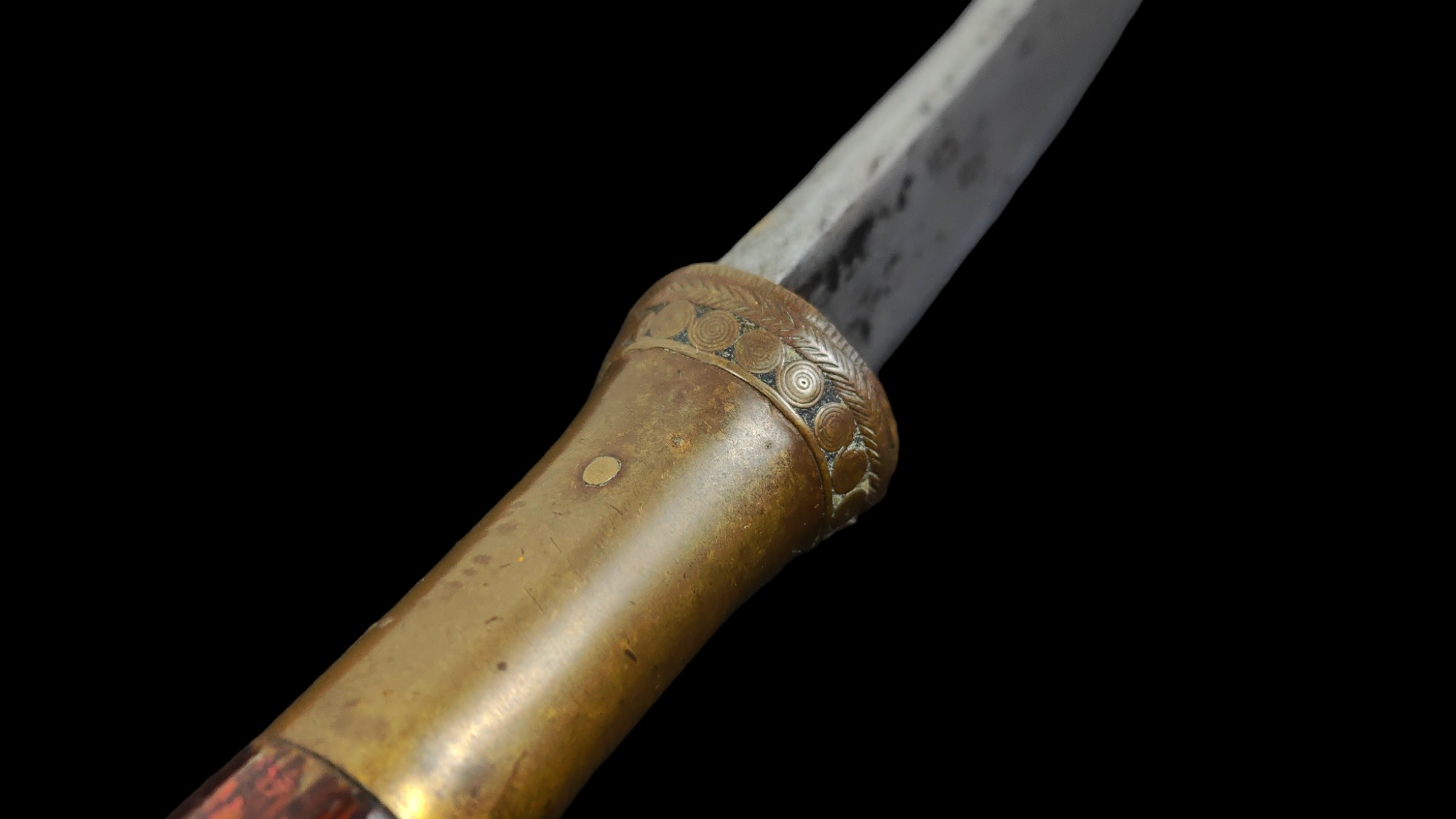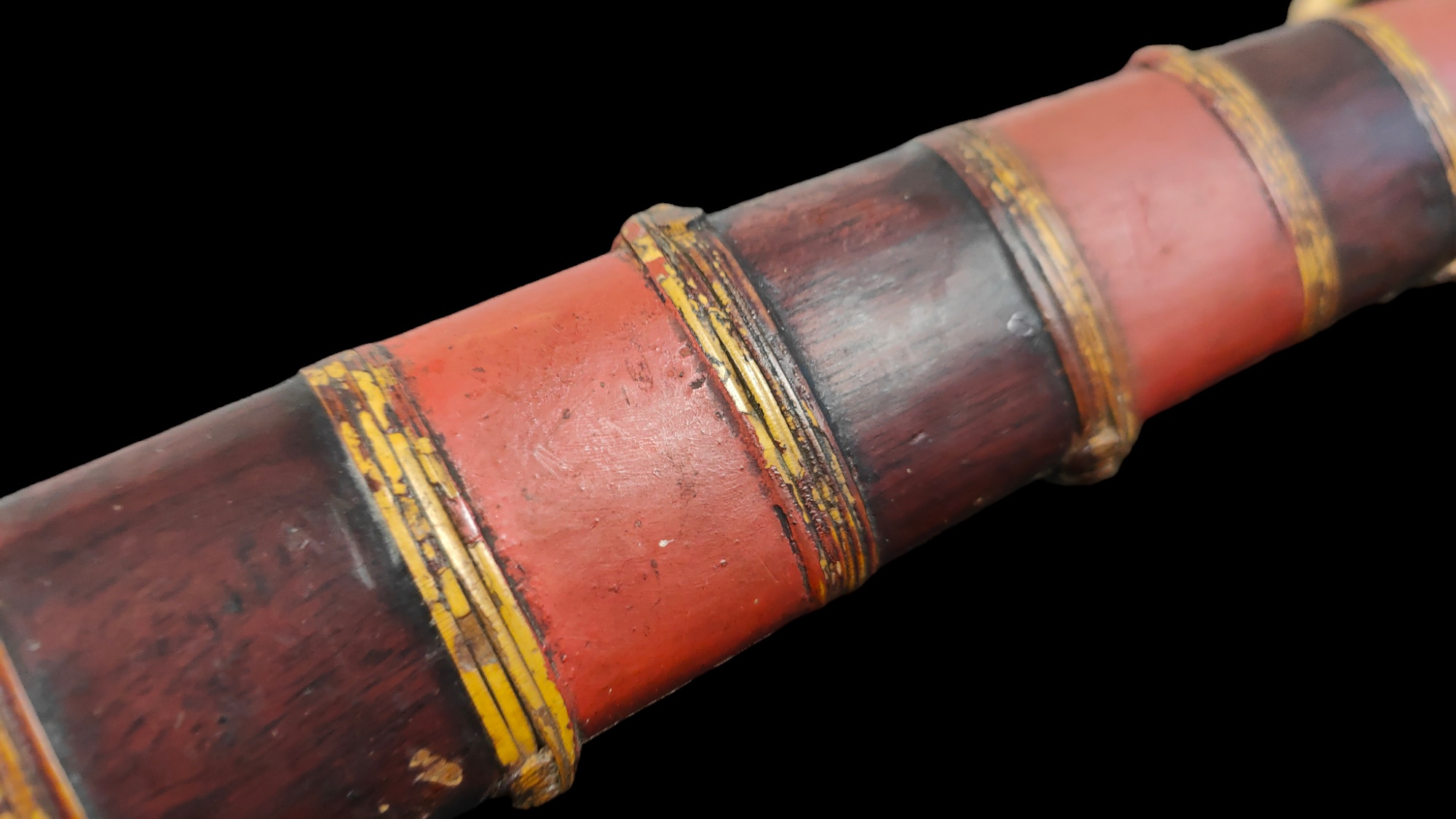
Swords of the Chin Hills
December 22, 2023 Asian Arms
Burmese swords are an intriguing part of what we know as "dha" or "daab", in that they are some of the most commonly encountered examples on the collecting market but also some of the least understood, particularly from more remote states. Large numbers of swords from the modern borders of Burma/Myanmar found their way to Britain but very few had any provenance or ethnic attribution recorded.
Modern day Myanmar is a country that encloses 135 official ethnic groups and in reality includes many more sub groups. Some of these, such as the Bamar, the group which gave the country its colonial name, the Shan, Mon and others are relatively well known. But many, although they have states within the country bearing their name, are little visited and almost unknown to outsiders. Chin State and the Chin people fall into this category in modern times, although they commanded quite a different reputation during the early British colonial period.
The Chin are a Kuki-Chin-Mizo speaking group who officially consist of at least 53 sub groups and would fall into the commonly used category of so called "hill tribes". These groups are indigenous to the mountain ranges that define the borders between modern day India and Myanmar. The exact period when the Chin moved into this region is not known but it is likely they resided in this area for several centuries. As with many hill tribes in South East Asia they migrated gradually from the Sino-Tibetan plateau and established slash and burn agriculture and associated villages. They were never fully under the control of the various Burmese ruling dynasties.
The modern history of the Chin is sadly lacking, part due to the mass conversion in the 20th century of the Chin by American Baptist missionaries which removed many traditional religious practices, but also because they actively resisted British colonial administration. This resulted in multiple British expeditions into the Chin Hills with significant British losses and one of the most long running campaigns of the subjugation of British Burma.
The Chin themselves were not isolated, with raids recorded by the British focused on the capture of not only natural resources but arms and other military goals. The aims of the Chin through traditional raids shed some light on their methods for acquiring arms, in particular swords. These raids typically included the capture of hostages who could be exchanged for valuable goods including iron, dhas, guns, cattle and other goods. Accounts of capturing arms are given in The Chin Hills by Carey and Tuck, who both served as colonial administrators in the Chin hills.
Hill tribes in general typically had some ability to work iron but British colonial administrators often expressed reservations about their skills and abilities to temper or harden iron for blades. This is odd given that the Burmans and Shans were certainly capable of tempering. Bronze casting is also mentioned as common, using moulds made of clay rice husks. However as shown above they also captured arms and would have been quite capable of remounting blades with their own cast components.
The rather rare colonial accounts of the British forays into these remote regions we have access to, highlight both the immense difficulty of operations in these areas but also the extreme importance of Indian levies both for their fighting skills but natural resistance to the climate and nature of the Chin fighters.
In fact the Chin managed to resist colonial control for decades after the official annexation of Burma and raiding was a consistent problem for the colonial administrators of the area as well as harbouring Burmese fugitives, which lead to the first British campaigns into the area.
These 19th century campaigns included the capture of Chin dha, some of which made their way into British museums and included tribal attributions. Period accounts also include surprisingly detailed descriptions of their scabbards, which are noted to be "vermilion and black parti-coloured da scabbards." Lt.-Colonel J. Shakespear writing in 1912, describes Chin dha as shorter than Burmese examples with lacquered wood handles and brass bands and knob (meaning pommel). This is exactly what we see in museum examples and gives us a very useful way to attribute swords to this area.

A short dha described as from the Lushai (Chin) hills from the British Museum
Museum examples also show bronze cast hilt elements, in keeping with period accounts of this being common to the area. Descriptions also mention short dha, which again is born out by museum examples.

This piece is labelled as from the Shan states, but likely is in fact Chin, the same museum (Horniman) has a correctly labelled Chin knife showing a very similar scabbard design.

A Chin knife from the Horniman Museum showing the characteristic red and black scabbard design
The sword that is the subject of this article has all of these features and includes an interesting tip form which is relatively uncommon but is present on another sword I have previously written on here. While this sword is larger than many Chin swords appear to be, the blade style and tip may indicate it is from the same region. It also features similar rattan banding on the scabbard.

The smaller piece that is the focus of this article, has a beautifully cast pommel and guard tube, with motifs that echo ancient casting styles seen as far back as the Dong Son period.

The sword has a thick spine, measuring 10mm at the base, with a blade length of 41.5cm and a total length of 64cm.

The tip style of the blade might lead some to assume a Kachin or Achang connection, however this blade's geometry and curvature are different and this type style is not unique to either the Kachin or Achang but seems to have a more broad distribution.

The scabbard is largely intact and exhibits the exact coloration and lacquer described by period sources with finely made rattan bands.

Contrary to some colonial accounts, the blade is not poorly made and is clearly tempered along the cutting edge using the typical water quench seen on blades from southeast Asia. While we cannot be certain if this blade was made within a Chin context or sourced from the lowlands, the mounts certainly are of Chin origin and the overall size of the sword is very much in keeping with weapons favoured by hill tribes.
The Chin seem to have adopted the use of dha directly from Shans and Burmese neighbouring them. This is not only born out by the style of their dha, but is in fact embedded in their language. In the excellent paper "Identifying Similitudes of the Zo People with Respect to their Traditional Dresses and Weapons" by Dr. Jangkhongam Doungel, the term Kawlhnam is given for sword, with hnam meaning sword and the Burmese being known as Kawl, clearly indicating that the sword was associated with the Burmese and adapted from them.
.webp)
An illustration of Khai Kam, a famous Chin leader in the 1880s-1890s with a sword very similar to the example in this article
This association with Burmese influence on the dha of the Chin and their tendency to capture arms from lowland villages can be clearly seen in period photography with a variety of dha styles depicted including some with typical Burmese lotus bud style pommels. Their methods of acquiring weapons and an apparently propensity for using captured arms means that attribution is perhaps best made based on scabbards and some decorative elements.
.webp)
Sizang (one of the many groups in the Chin hills) chiefs during the colonial period
Modern day Chin state is sadly one of the poorest and least developed in modern day Myanmar, however it is a region of incredible natural beauty, fascinating cultures and a rich history, while swords are only a small aspect of this picture, it is a pleasure to have detailed colonial period resources as well as more recent research to be able to somewhat accurately attribute swords to this relatively obscure region.